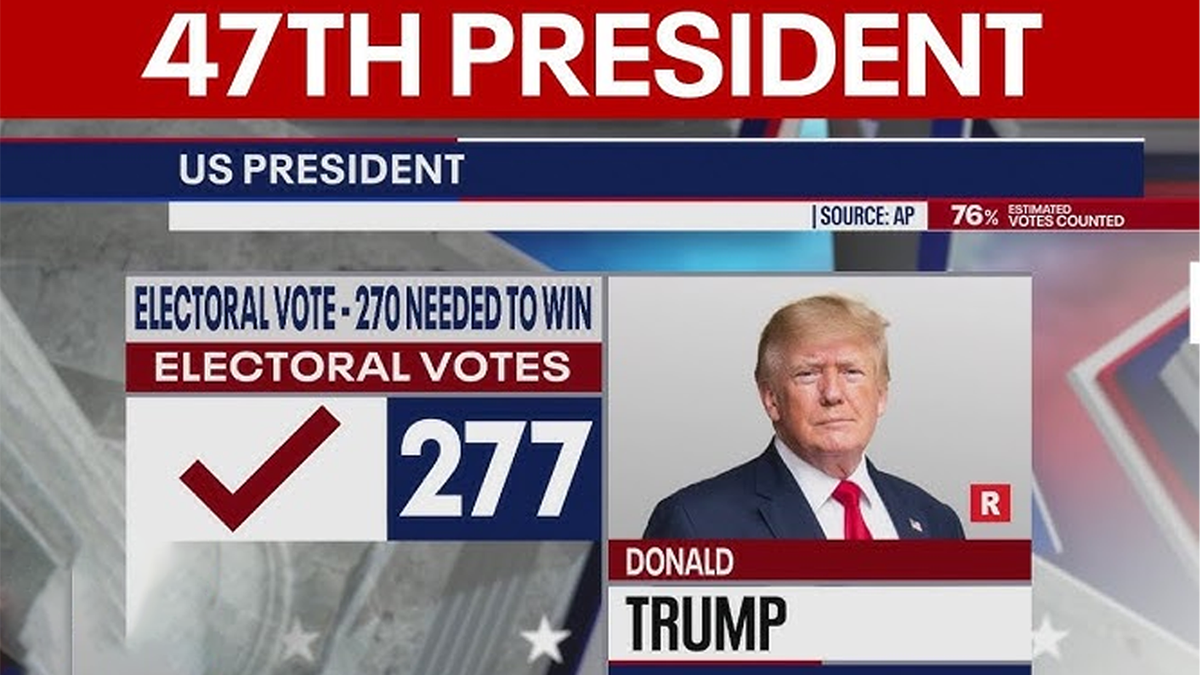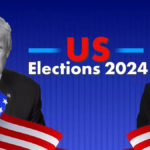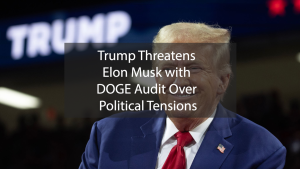
2024 U.S. Presidential Election: Donald Trump Projected Winner, Secures 276 Electoral Votes
The 2024 United States presidential election has concluded with Donald Trump and his running mate, JD Vance, projected to win over Kamala Harris and Tim Walz. Major news networks have called the race for Trump, who has secured 276 electoral votes, surpassing the 270 required to claim victory. Here’s a detailed look at the results, upcoming procedures, and the potential impact of this election.
Election Outcome
- Projected Winner: Donald Trump, along with vice-presidential candidate JD Vance, has been declared the projected winner of the 2024 U.S. presidential election.
- Electoral Vote Count:
- Trump/Vance: 276 electoral votes
- Harris/Walz: 262 electoral votes
- Popular Vote Breakdown:
- Trump/Vance: 71,212,666 votes (51.0%)
- Harris/Walz: 66,282,873 votes (47.5%)
- States Carried:
- Trump/Vance: 27 states plus 1 congressional district in Maine
- Harris/Walz: 18 states, Washington, D.C., and 1 congressional district in Nebraska
Trump’s victory in several key battleground states, including Pennsylvania and Michigan, played a significant role in his path to the White House. This win marks a historic political comeback, returning Trump to the presidency after a four-year hiatus.
Upcoming Steps in the Electoral Process
While Trump has been projected as the winner, several steps remain to formalize the election results:
- Certification of State Results: Each state will certify its results over the coming weeks. In some states where the margins were extremely narrow, recounts may be requested, although they are unlikely to alter the overall outcome.
- Electoral College Meeting: The official electors will convene on December 17, 2024, to cast their votes for president and vice president. This step solidifies the vote in favor of the projected winner.
- Congressional Certification: On January 6, 2025, Congress will gather in a joint session to count and certify the electoral votes. This is typically a ceremonial process but can see objections or challenges if contested by members of Congress.
- Transition of Power: As the president-elect, Trump will begin forming his transition team, working to set priorities, vet potential Cabinet members, and prepare policy agendas.
- Inauguration Day: The formal transfer of power will take place on January 20, 2025, when Trump and Vance will be inaugurated as the next president and vice president of the United States.
Potential Challenges and Legal Proceedings
Given the contentious nature of recent elections, there may be legal challenges or claims of electoral misconduct, especially from supporters of Harris and Walz. However, based on the current electoral map and vote counts, these challenges are unlikely to change the outcome.
While recounts are anticipated in certain states due to close margins, Trump’s lead in electoral votes makes it improbable that these will affect the overall result. This clarity in the margin may ease some tensions, but the possibility of court cases or requests for investigations could still linger in the post-election period.
Political and Legislative Landscape Post-Election
With Republicans projected to retain control of both the Senate and the House of Representatives, Trump’s legislative agenda may face fewer obstacles than during his previous term. This alignment between the executive and legislative branches could lead to the swift advancement of policy initiatives. Key areas of focus are expected to include:
- Economic Policies: Trump’s return to office could revive his focus on economic nationalism. This may involve tax reforms aimed at benefiting corporations and working-class Americans alike, as well as efforts to boost U.S. manufacturing and reduce dependence on foreign imports.
- Immigration: Immigration reform is expected to return to the forefront, with stricter policies aimed at securing the southern border and revisiting pathways for legal immigration. Trump may also seek to limit asylum policies and streamline deportation processes.
- Healthcare and Social Policies: With a Republican majority, there could be renewed attempts to repeal or modify elements of the Affordable Care Act. Social policies, particularly regarding abortion and LGBTQ+ rights, may also see shifts, as the GOP generally advocates more conservative stances.
- Foreign Policy: Trump’s “America First” philosophy could lead to renegotiated trade agreements and potentially more isolationist policies. The administration is likely to take a tougher stance on China and seek to adjust alliances to favor American economic and strategic interests.
Public Reaction and Potential Protests
With Trump’s re-election, public reaction is expected to be deeply polarized. Protests from opposition groups could erupt in major cities, while supporters may hold celebratory rallies. This division reflects the broader split within the American populace, with nearly half of voters supporting Harris and her platform focused on social equity, climate change, and healthcare reform.
Security has been heightened in major urban centers, particularly around government buildings and public landmarks, in anticipation of possible civil unrest. Federal and local authorities are working to maintain order and ensure that any demonstrations remain peaceful.
International Reactions to Trump’s Win
Trump’s projected win has already triggered responses from around the world. Allies and partners are watching closely, anticipating shifts in U.S. foreign policy that could impact global trade, military alliances, and diplomatic relations.
- Europe: Leaders in the European Union are preparing for potential trade renegotiations and discussions about NATO funding, as Trump has previously questioned financial contributions from allied nations.
- Asia: Countries like China and Japan are bracing for renewed trade talks, with expectations that Trump will continue pushing for terms more favorable to the U.S. Relations with China could become more strained, particularly with regard to technology, tariffs, and intellectual property issues.
- Middle East: Trump’s administration may adopt a more assertive stance in the Middle East, particularly in relation to Iran and its nuclear program. Gulf allies such as Saudi Arabia and the UAE may look forward to reinforced ties.
Conclusion
The 2024 election has brought Donald Trump back to the White House, marking a momentous shift in U.S. politics. With the projected win of 276 electoral votes, Trump is set to take office alongside JD Vance, paving the way for a second term that promises to reignite some of his previous administration’s policies while addressing new challenges.
The coming weeks will see the certification of results, the gathering of the Electoral College, and the formalities in Congress. As these steps unfold, Americans and global observers alike will be watching to see how Trump’s administration takes shape and what it means for the future direction of the United States.
















